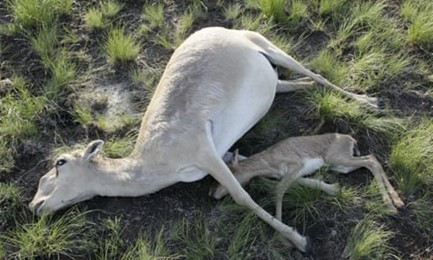
Predicting extinctions of populations of individual species and sudden changes in the functioning of an ecosystem has long been the focus of attention of ecologists and ecosystem management specialists. Mathematical modeling of environmental processes plays a key role in assessing the possibility of such events. Traditionally, in the scientific literature, modeling of population dynamics (in particular, predicting extinction of populations) has mainly focused on studying the dynamics of ecosystems in the long term, neglecting transitional regimes. Meanwhile, the environment is usually non-stationary, which may mean that long-term behavior is never observed in reality. Accordingly, the past two decades have seen a growing understanding and reconsideration of the role of transitional regimes in both empirical ecology and theoretical research, particularly in the context of species extinctions.
Employees of the A.N. Severtsov Institute of Ecology and Evolution RAS A.Yu. Morozov and colleagues consider several paradigmatic mathematical population models with discrete time of increasing complexity, such as one-species, two-species and three-species systems of interacting populations. A feature of the models under scrutiny is the consideration of spatial diffusion (movement) of organisms, which depends on population density. Mathematical modeling is used to study transient nonequilibrium processes to predict ecosystem viability and species conservation. The work shows that sudden collapse of an ecosystem and extinction of species can occur without any influence of external factors. This occurs as a consequence of the fact that a long transitional quasi-static regime is mistakenly taken for the final one, whereas at the end of this regime, the ecosystem abruptly switches to another regime without any external influence. Notably, delayed extinction can occur after thousands of generations of seemingly benign population dynamics.
The study predicts that long-term transients are not only widespread in various models of population dynamics, but also have a wide variety of types of sudden collapse scenarios without changes in external environmental conditions. The predicted ubiquity of long-term transients underscores the need to incorporate them into species diversity conservation programs. The paper describes how such scenarios can be modeled and predicted.
The results were published in the journal Biological Conservation (2024). AY Morozov, D Almutairi, SV Petrovskii, A Hastings. Regime shifts, extinctions and long transients in models of population dynamics with density-dependent dispersal. Biological Conservation, 2024, vol. 290, 110419, doi.org/10.1016/j.biocon.2023.110419
